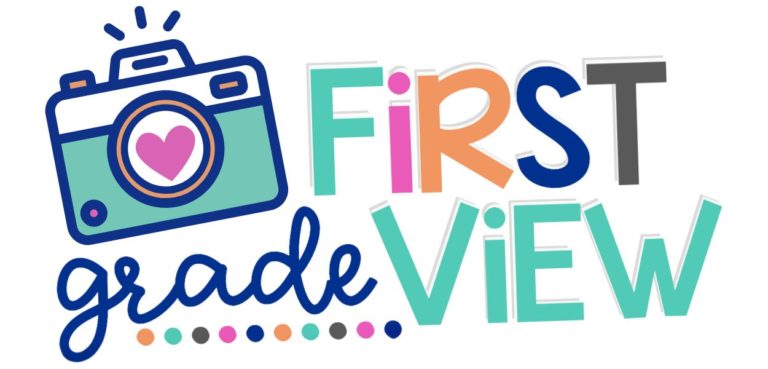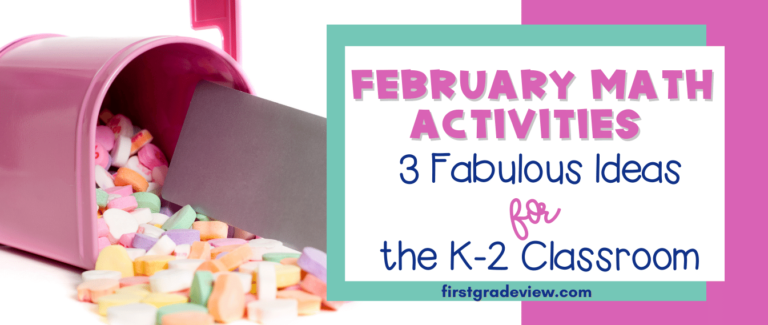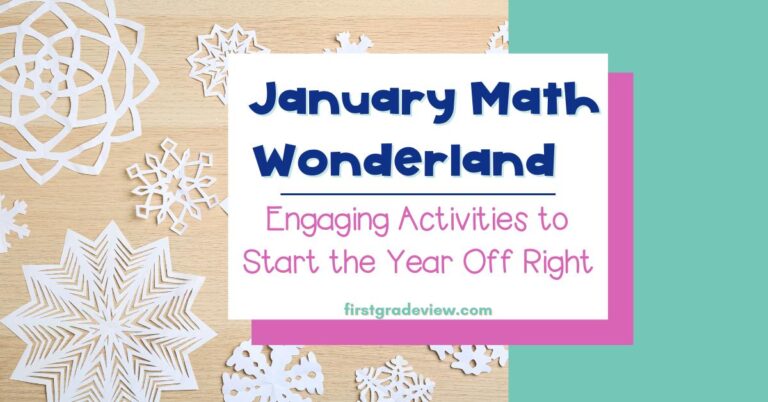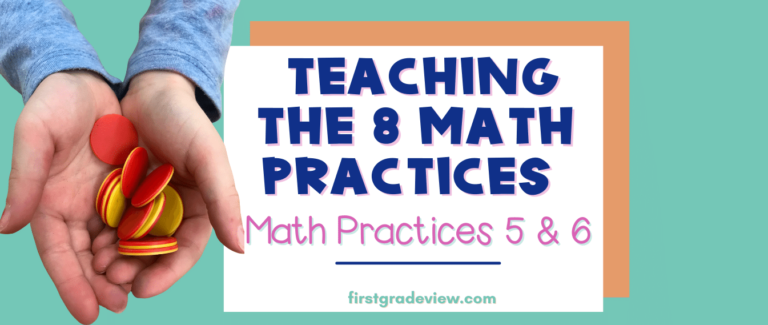Tricky word problems can often feel like a puzzling maze, with some paths leading to clear solutions while others leave students feeling lost. But don’t worry! With the right strategies in your toolkit, you can guide your students to confidently tackle even the trickiest math story problems. Let’s dive into some practical, teacher-tested tips to help your students turn those puzzling problems into opportunities for success.

Types of Tricky Word Problems
Word Problem Type: Start Unknown
In start unknown problems, students must solve for the beginning quantity. An example of this problem type is, Andrea had some stickers. Her mom gave her 20 more. Now she has 33 stickers. How many stickers did Andrea start with? Students can struggle with this type of problem because they try to model the problem in chronological order.
Teaching tip: Make sure you unpack this tricky word problem type with students. You can read more about how to unpack problems here. Another helpful tip is to write a question mark down on a post it note and have students identify where the unknown number is in the word problem. This can help them see that the beginning part is missing. In this case, the problem could be modeled as ? + 20 = 33. Students can also place the numbers in a number bond to help them see that they can either add on to 20 or subtract 33-20 to solve for the missing part.
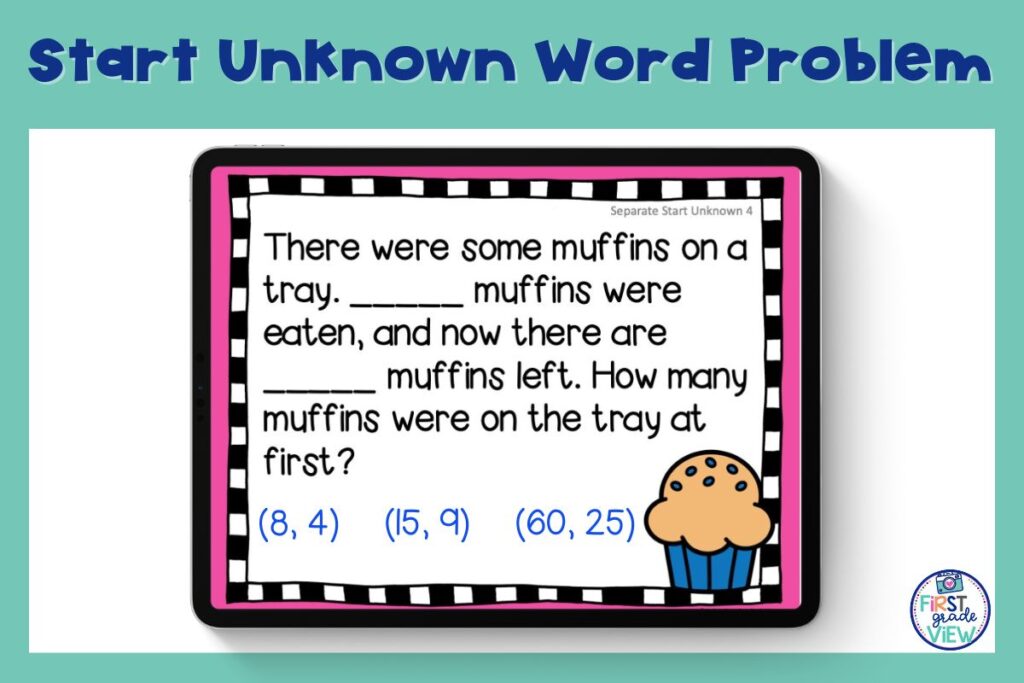
Word Problem Type: Part, Part, Whole
In a part, part, whole word problem, either the total is missing, one part, or both parts. For example, “There are 6 chrysanthemums and 12 petunias in a vase. How many flowers are in the vase?” This can be a tricky word problem type because there is no direct action. This makes it hard to model and students must understand that a quantity can represent two things at once. In the example problem, they need to understand that chrysanthemums and petunias are types of flowers.
Teaching tip: Just as before, you will want to start by unpacking the problem with students. You can even ask, “Is there any action?” By noticing there is no action, it cues them to pay attention and identify what information is given and what is being asked rather than following a sequence of events. One way to help students work through these types of problems is by having them use counters to represent the quantities in the problem. They can also draw a picture or label a number number or tape diagram when representing the problem to show how the quantities are related.
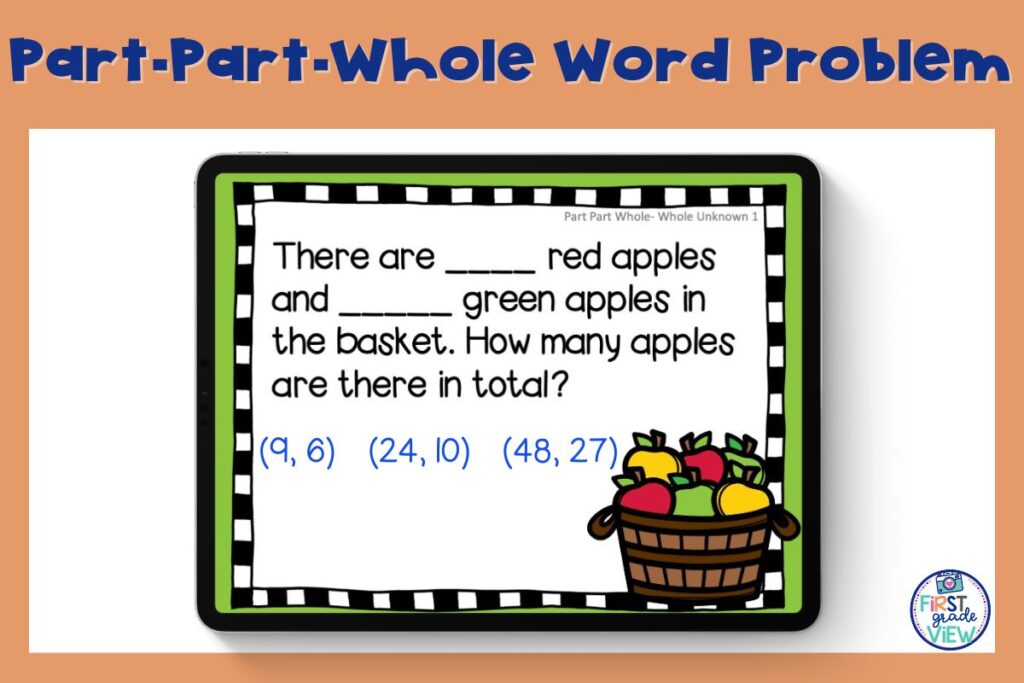
Word Problem Type: Comparison Problems
In comparison word problems, two quantities are being compared and described as fewer, less than, more, bigger, or greater than. In addition to not having action, this language can be tricky for students. Take the following problem for example, “Andrea has 2 fewer stuffed animals than Jenny. Jenny has 8 stuffed animals. How many stuffed animals does Andrea have?” In order to solve, students need to know how the quantities are related and what the term fewer means.
Teaching tip: As always, start by analyzing the problem by going through the unpacking process. Remember, we want students to understand the meaning of the problem. If students are having difficulty which quantity is bigger or smaller, cover up the number that comes before the word more/fewer. For example, “Andrea has __ fewer stuffed animals than Jenny. Jenny has 8 stuffed animals.” Now students can model the quantities with a tape diagram and see that Andrea has less than Jenny, therefore the answer that makes sense should be smaller than 8.
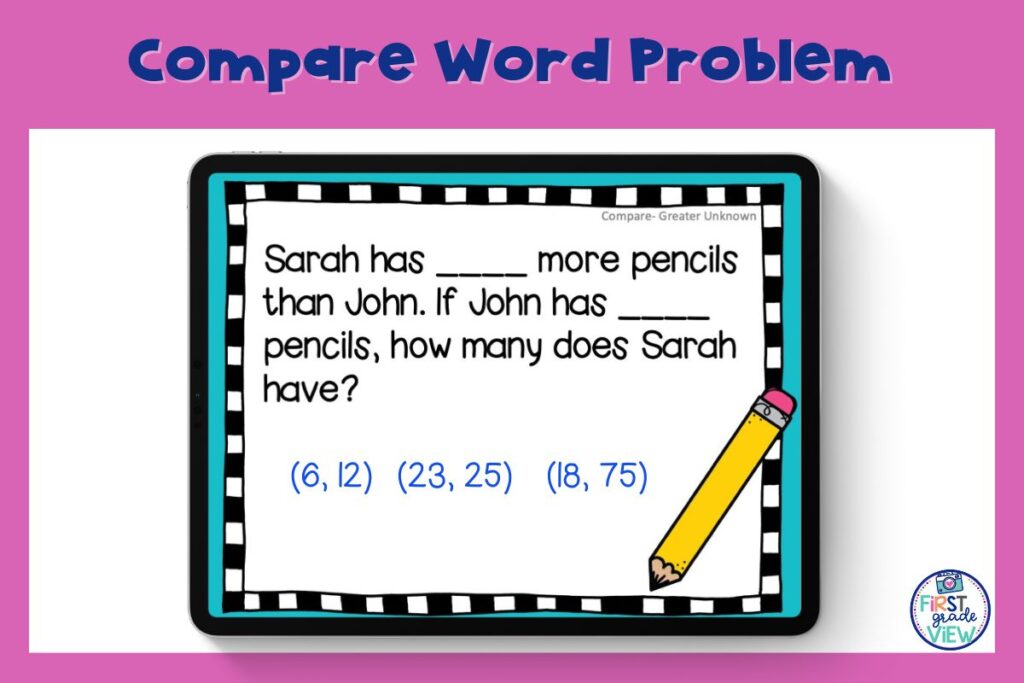
Other Considerations for Tricky Word Problems
The following considerations will help all students, including English Language Learners.
- You can vary the difficulty of a problem through the number set you choose for students.
- Wording matters. Problems that follow a chronological or natural story order will be easier for students than problems where the order is inverted. Expose students to various types of wording.
- Students can find actions that happened in the past more tricky to understand. When asking follow up questions for problems such as join change unknown, ask “How much more is needed?” versus “How much more was added.”
- Always unpack word problems when students are having difficulty.
- Encourage the use of counters, pictures, or other visuals to represent the quantities in problems.
- Provide contextual problems.
- Explain any vocabulary words used in problems that students may not know.
- Explain any math vocabulary or have a math word wall that students can refer to.
Word Problems Can Be Easy
When working with tricky word problems with your students, remember that every challenge is an opportunity for growth. By equipping ourselves with these strategies, we empower our students to approach word problems with confidence and curiosity. Let’s continue to explore, practice, and celebrate the triumphs along the way. Now, it’s your turn! Want more tips for tackling tricky word problems? Come join me over on Instagram @firstgradeview for more first-grade math ideas, strategies, and classroom inspiration. Let’s make math meaningful and fun—together!
Want to try out word problems with your first graders? Check out this addition and subtraction word problem bundle for everything you need to get started.
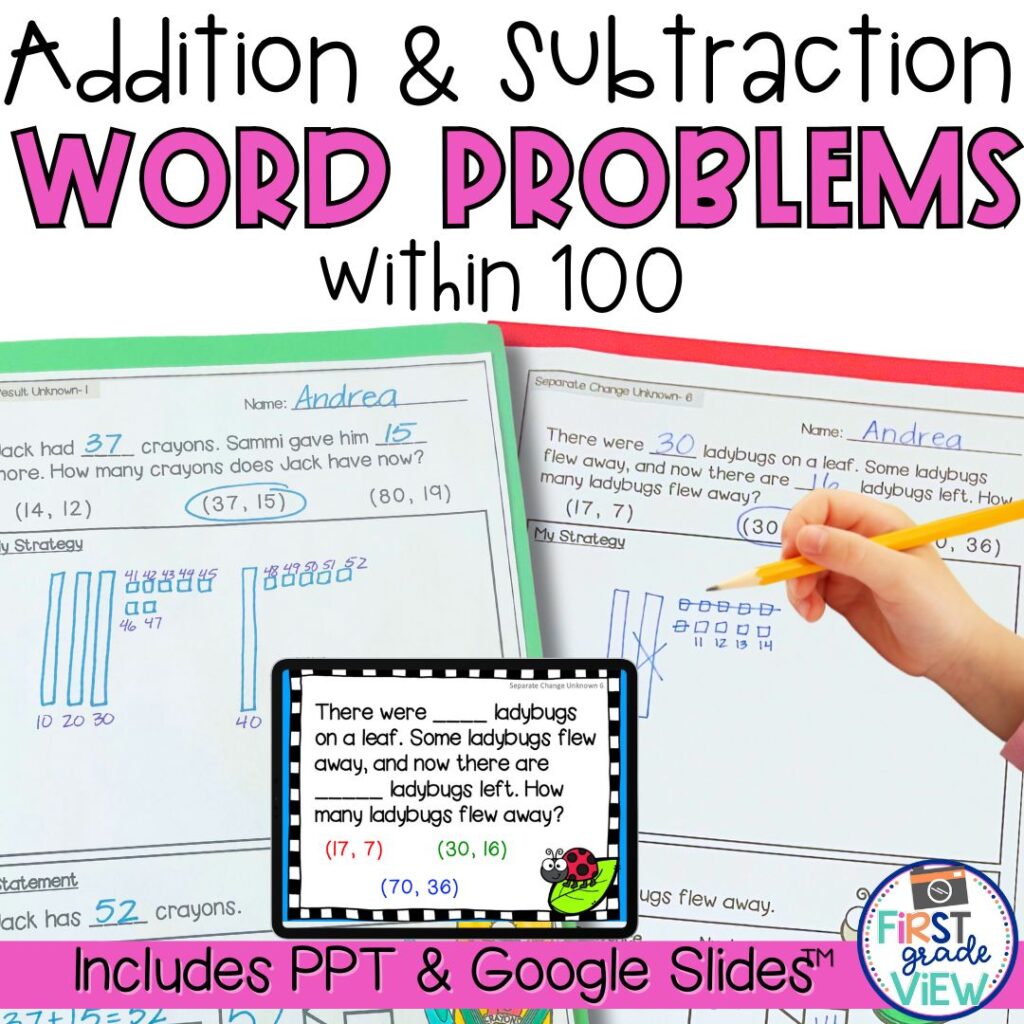
You May Also Like:
Types of Story Problems in Math
